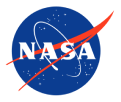Science Missions
NASA Science seeks to discover the secrets of the universe, search for life elsewhere, and protect and improve life on Earth and in space.

Human Spaceflight
Human space exploration addresses fundamental questions about our place in the universe and the history of our solar system. NASA’s exploration vision is anchored in providing value for humanity by answering some of the most fundamental questions: Why are we here? How did it all begin? Are we alone? What comes next?

Aeronautics
Today’s entire aviation industry relies on technology rooted in NASA research: inside cockpits, cabins, and jet engines; atop traffic control towers; and from departure gate to arrival terminal at airports everywhere. In early coordination with the U.S. Air Force, many of NASA’s groundbreaking discoveries with aircraft helped pave the way for supersonic travel and space aviation.

Space Technology
Technology demonstrations enable NASA to mature the cutting-edge, laboratory-proven technologies and new capabilities that will transform future science and space exploration goals. Through these missions, we conduct ground-based or in-space testing to determine the feasibility of technologies and systems for use in NASA missions, for other government agencies, and with the commercial space industry

Artemis II
Four astronauts will fly around the Moon to test NASA's foundational human deep space exploration capabilities, the Space Launch System rocket and Orion spacecraft, for the first time with crew.
Learn More
Artemis II Crew
Decades of Discovery
NASA's first high profile program was Project Mercury, an effort to learn if humans could survive in space.
NASA is responsible for unique scientific and technological achievements in human spaceflight, aeronautics, space science, and space applications that have had widespread impacts on our nation and the world. When NASA opened for business on October 1, 1958, it accelerated the work already started on human and robotic spaceflight.
Learn About Project Mercury about Decades of Discovery
Missions
Exploring the secrets of the universe for the benefit of all.

Artemis II
Four astronauts will venture around the Moon on Artemis II, the first crewed mission on NASA's path to establishing a long-term presence at the Moon for science and exploration.

Commercial Crew
NASA’s Commercial Crew Program is delivering on its goal of safe, reliable, and cost-effective human transportation to and from the International Space Station.

Hubble Space Telescope
Since its 1990 launch, the Hubble Space Telescope has changed our fundamental understanding of the universe.

James Webb Space Telescope
Webb is the premier observatory of the next decade, serving thousands of astronomers worldwide. It studies every phase in the history of our Universe.

Juno: Mission At Jupiter
Probing beneath Jupiter's dense clouds to answer questions about the origin and evolution of Jupiter, our solar system, and giant planets across the cosmos.

International Space Station
The International Space Station Program brings together international flight crews, multiple launch vehicles, the international scientific research community and much more.

Perseverance Mars Rover
This rover and its aerial sidekick were assigned to study the geology of Mars and much more.

Parker Solar Probe
On a mission to “touch the Sun,” NASA's Parker Solar Probe became the first spacecraft to fly through the corona – the Sun’s upper atmosphere

Quesst
NASA's mission to demonstrate how the X-59 can fly supersonic without generating loud sonic booms.

Low-Earth Orbit Flight Test of an Inflatable Decelerator
NASA’s Low-Earth Orbit Flight Test of an Inflatable Decelerator, or LOFTID, is demonstrating a cross-cutting aeroshell for atmospheric re-entry.
Future Missions

Humans on the International Space Station
Every day since Nov. 2, 2000, people have been orbiting our planet inside the International Space Station, bringing together science, technology and human innovation to enable new technologies and research breakthroughs not possible on Earth. The first decade of the International Space Station was the decade of construction. The second decade moved from initial studies to fully using the orbiting lab. We have now entered the decade of results.

















































